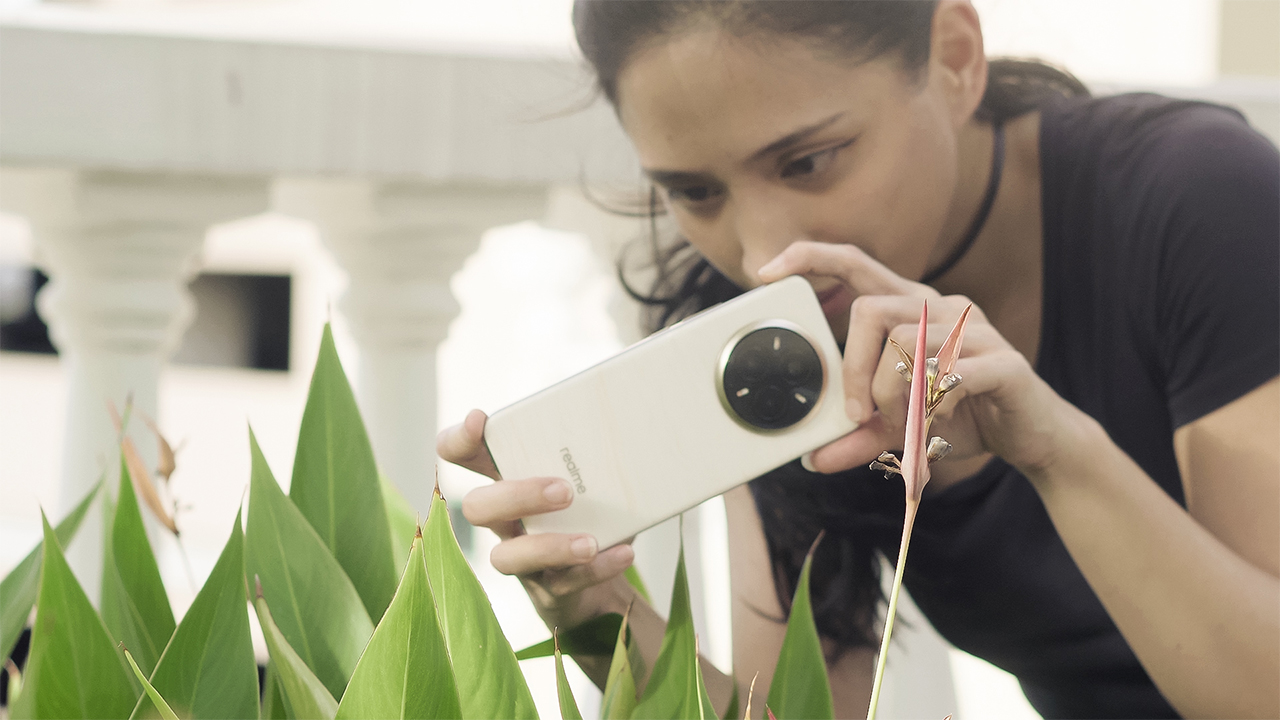But in reality, living in quarantine makes it all too easy to fall into a pattern of laziness. Distractions are also pretty much unavoidable and fighting the temptation to not binge on Netflix requires an iron will. Not to mention, starting or creating a workout routine, in general, can be intimidating for most.
CHECK OUT: 5 workout and fitness motivation tips

We talked to NASM-CPT (Certified Personal Trainer) coach, Quinno Abat, and asked his help to create an effective, no-equipment, full-body workout that can easily be followed without having to go to a gym (which is also probably closed). This workout will feature exercises that can be altered to fit your personal fitness level. And since this is designed as a workout that you can do almost anywhere, most of the exercises will utilize your bodyweight or items you can easily find at home. Just remember to choose a space where you can exercise safely during this pandemic.
Getting warmed up
Remember that with any workout, it’s always best to get a good warm-up and stretch in. These will help wake up and activate your muscles and help prepare your body for more intense activity. Coach Quinno suggests a series of movements that focus on mobility activation and proper balance. Here’s an example of a stretching routine you can follow:
[supsystic-tables id=5]
The lowdown on no-equipment exercises
Moving on to the workout, there will be 10 repetitions and 3 sets for each exercise with a short break in between sets. Moving images accompany each exercise to serve as a guide. As you progress each week, be sure to add more reps to challenge yourself more. Remember to maintain proper form as it is key to an effective workout. Proper form will target the correct muscles as well as keep you away from injuries.
If you find yourself looking for more challenge, you can modify the difficulty by increasing the time it takes to ease out of an exercise. Using Goblet Squats as an example, once you’ve lowered down into the squat position, make it more difficult by slowly easing out of the squat, with controlled motions, back into the starting position. The opposite can be applied for beginners. Use a faster, but controlled motion, to get out of the squat and back into starting. This type of modification can be applied to all exercises.
Bodyweight Goblet Squat
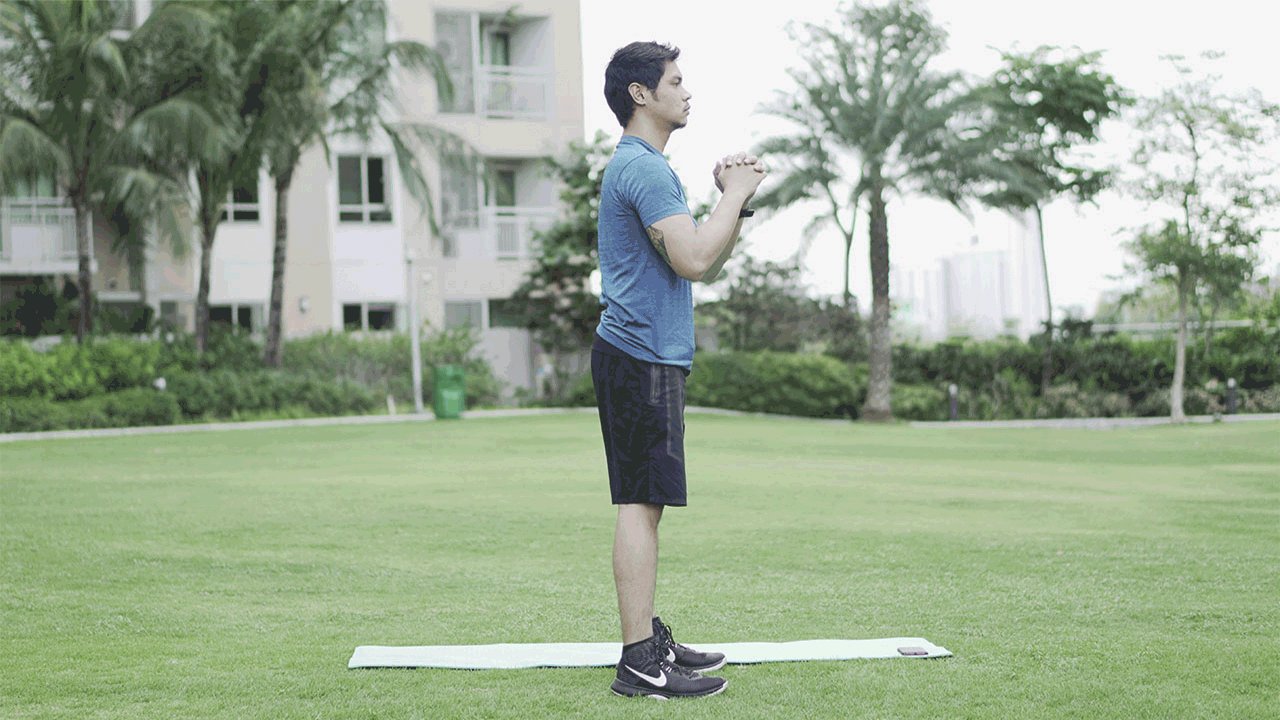
Stand with your feet shoulder-width apart and slightly angled out, tuck in your elbows, and clasp your hands together. Keep your back straight and core tight as you squat down until your thighs are parallel to the floor. Squat down slowly for 3-4 seconds then return to the starting position with locked out hips and knees then repeat. Remember to keep your lower back straight and avoid moving knees forward too much as you lower down. It’s also very important that you avoid caving in your knees by keeping them aligned with your second or third toe.
Beginners who can’t do a full squat can do a chair squat instead. Simply squat down into a chair, maintaining proper form as mentioned above, then stand back up. Once you’re able to, take out the chair to attempt the full exercise. Advanced users can opt to add weights. Simply hold the weights in front of you like a goblet and proceed as instructed above.
Target muscles: Glutes, quads, hamstring, calves, core
Push-Ups

Lie facedown on the floor and plant your palms down on the sides, and aligned with your chest. Extend your arms and push yourself up until you form a straight line from the top of your head to your feet. Keep your back straight and core tight as you lower down. Don’t let your elbows get too wide or too narrow. Push back up and repeat.
Beginners can opt to do knee push-ups or wall push-ups to build strength for a full push-up. For knee push-ups, keep your knees on the ground as you perform the exercise instead of being on your toes. For wall push-ups, stand and plant your palms, shoulder-width apart, down on a sturdy wall. Keep feet flat on the floor as you bend your elbows and lean closer towards the wall. Push back and repeat.
Target muscles: Chest, shoulders, back, biceps, triceps
Bulgarian Split Squat
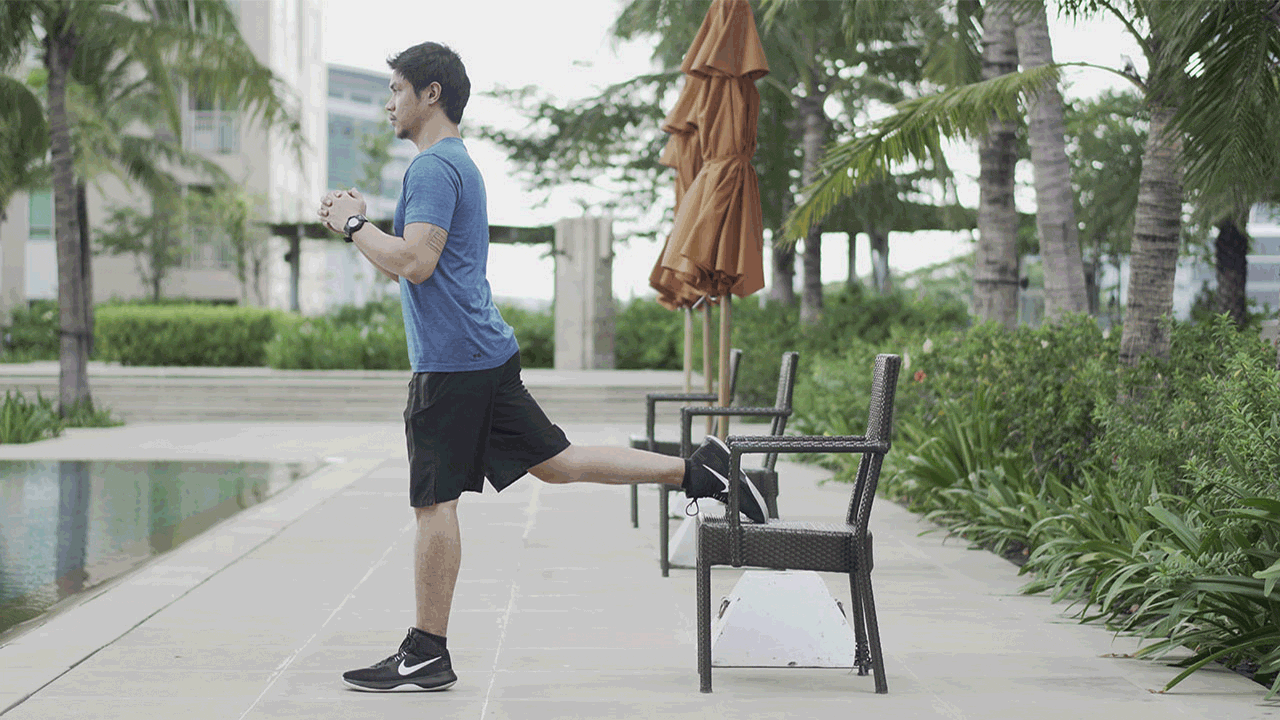
Find a place where you can elevate one leg. You can use stairs, a low table, or a chair. Make sure the item you’re putting your leg up on is stable and will not slide or move. Stand with your feet hip-width apart. Take one foot and place the instep of your foot (where your shoelaces are) on the elevated surface. Keep your chest up and slowly lower your hips until your rear knee is close to the floor. Do not push your front knee forward and instead lower your whole body down. Push back up through the heel of your front foot to return to your starting position then repeat. Alternate bent leg per set.
If this is too difficult, start with stair step-ups. As the name suggests, you can do this exercise on stairs or any low stable surface. To perform the exercise, place one foot firmly on the elevated surface. Press through your front foot’s heel and drive your rear leg up to 90 degrees, balancing on your other foot. Stabilize for 2-3 seconds then repeat. Alternate legs for every set.
Target muscles: Glutes, hamstrings, quads
Single Arm Row
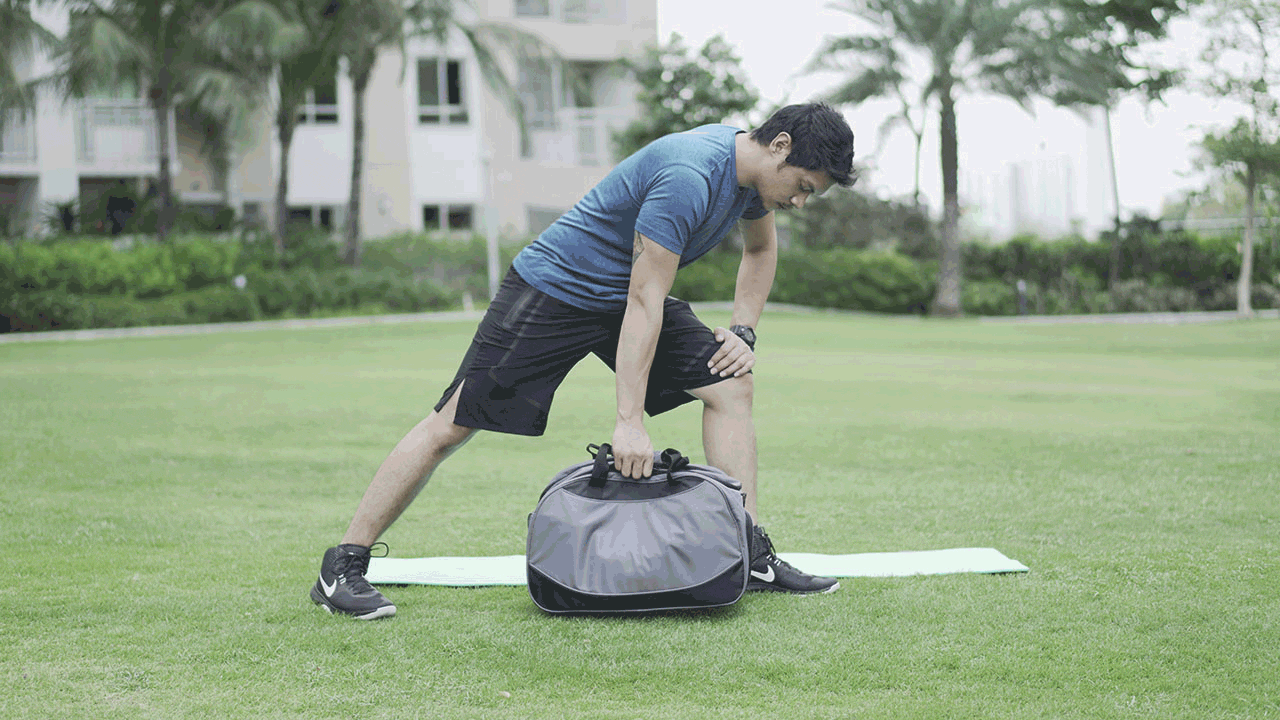
This exercise is ideally done with dumbbells but you can use any heavy item you can find, like a large water container or a heavy bag. Holding your weight in one hand, step into a lunge position, front leg bent while the rear is stretched straight back out. Lean slightly forward and rest your weight-free hand on the thigh of your bent leg.
Lower the weight to the floor to put yourself into the starting position. Tighten your core then pull the dumbbell up to the side of your body near your ribs. Keep your elbow close to your body and avoid rounding your back as you pull the weight up. Lower down and then repeat. Alternate sides for each set.
Beginners only need to start with lighter weights or placing your free hand on a surface for support. Increase weights as you progress.
Target muscles: Back, shoulders, biceps
Chair Dips

Find a hard and stable chair and sit with your arms at the side and feet flat on the ground, hip-width apart. With your palms facing forward or to the side, grip the chair as you move your body forward off the chair until your butt is hovering over the floor. Keep your feet flat on the floor as you slowly lower your body, hinging at the elbows until they reach a 90-degree angle. Push back up to the starting position then repeat.
Instead of a variation, beginners should aim to increase their range of motion using this exercise. Start slowly and stop at the position you’re most comfortable in. Attempt to go a little further each time you do the exercise.
Target muscles: chest, triceps
Jackknife Sit-Up
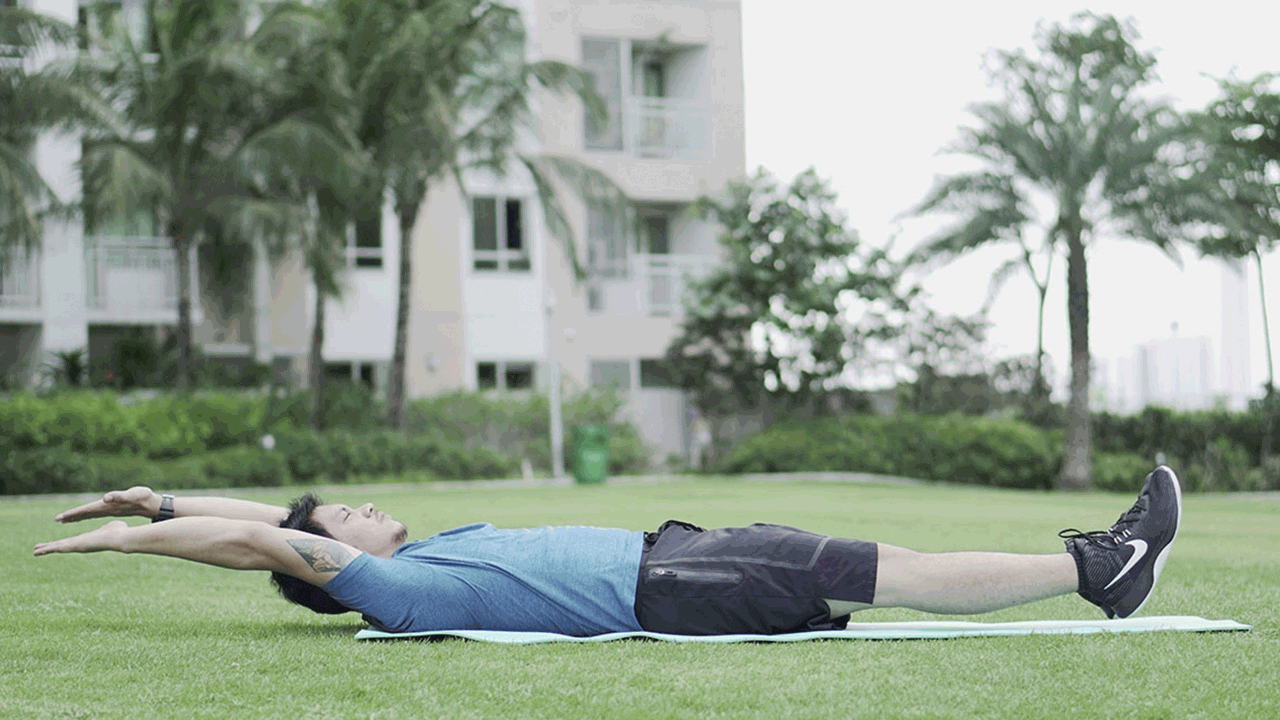
Lie down on your back and keep your arms stretched out overhead and your legs extended. Simultaneously lift your legs and arms into a 45-degree angle. Attempt to make your hands and feet meet in the middle. This move is a crunch that targets your upper and lower abs so make sure to focus on those muscles as you do this exercise.
Beginners can start with lying leg raises to improve their core strength. Still lying on your back, keep your arms to the side and lift your legs so that they’re slightly hovering off the floor. When you’re ready, lift your legs up to a 45-degree angle. Keep your back flat on the floor as you lower your legs back down to hover. Repeat as necessary. For those looking for more challenge, hold a weight in each hand as you perform the exercise.
Target muscles: Abs
Russian Twist
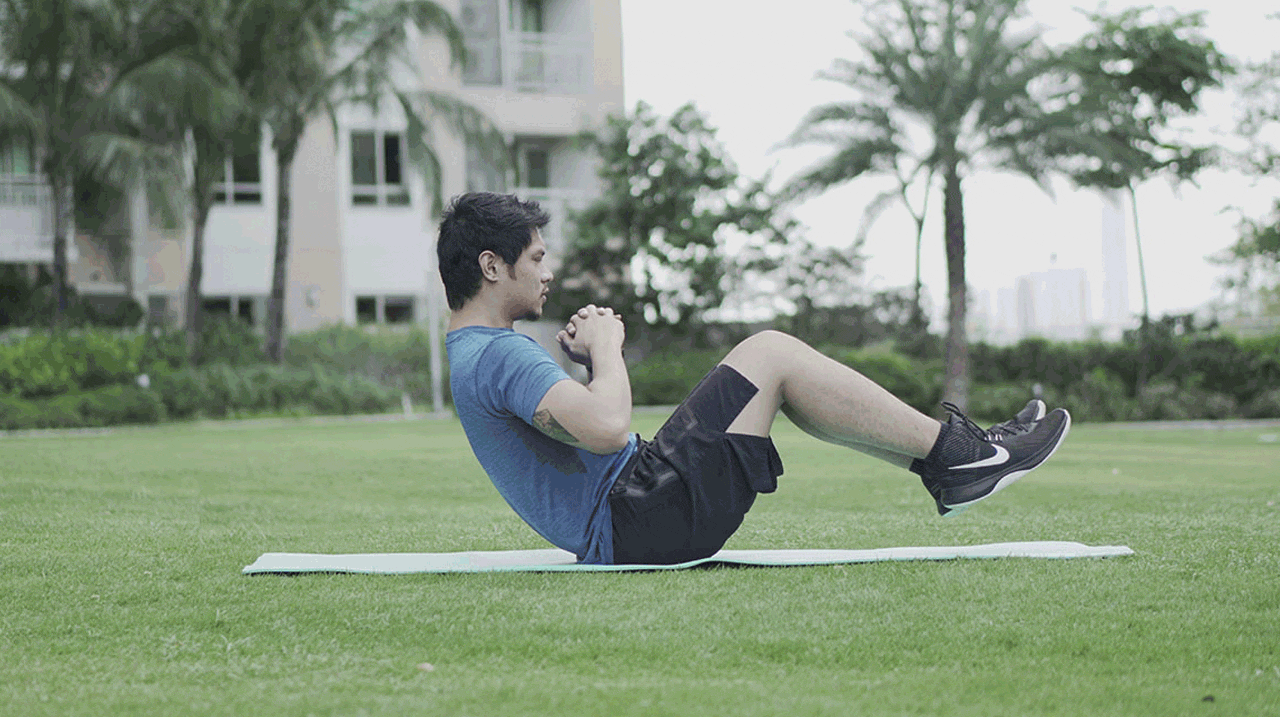
Start by lying down with your knees up and feet flat on the floor. Slowly lift your whole chest until you’re about 45-degrees or forming a v-shape with your thighs and chest. Clasp your hands together, keep your back straight, and lift your feet a few inches off the ground. To begin, rotate your torso to the left using your hands to guide you, while keeping your back straight and feet hovering off the floor. Do the same in the other direction. Rotating left and right counts as one rep. Repeat as necessary.
Beginners can attempt this same exercise with their feet flat on the floor. Strengthen your core until you can do the full exercise.
Target muscles: Abs
Final thoughts
This entire full-body workout is best alternated with cardio especially if you’re aiming for weight loss. You can easily design your own cardio routine or simply do a circuit of various plyometric or jump training exercises.
If you don’t feel like making your own routine, Coach Quinno suggests doing a circuit with 10 reps each of squat jumps, skater jumps, plyometric push-ups, mountain climbers, butt kicks, and bicycle crunches. Rest after doing all the exercises in a row then repeat for a total of three sets.
The World Health Organization recommends at least 150 minutes of moderate to intense activity per week to keep your body fit and working properly. But to gain additional health benefits, at least 300 minutes of moderate physical activity per week is recommended. With this workout, coupled with some cardio, you can easily reach those minutes and even maybe go past it. Remember to pair your workouts with healthy food choices and habits to keep your body fit and strong.
Happy workout!





